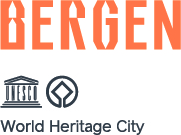You are here: Home Sustainability Slik påvirker klimaendringene Bergensregionen

Welcome to the Itinerary Planner. Use this tool to build your own journey or choose from an exciting range of specially selected tours.
To build your own Itinerary, click  to add an item to your Itinerary basket.
to add an item to your Itinerary basket.
Menu
You are here: Home Sustainability Slik påvirker klimaendringene Bergensregionen
Climate change affects the Bergen region in several different areas. More frequent heat waves in southern Europe may mean that more people seek cooler destinations such as Norway.
So-called Coolcation tourism is a growing trend we are already seeing. This can lead to more guests at the destination. Something that can be positive for the turnover of the businesses at the destination, but which also means that our ability to handle more guests through good visitor management must be strengthened.

Photo from Bergen city center: Visit Bergen / Espen Bakketun - visitBergen.com
For the Bergen region, climate change means, in short, that the average temperature at the destination will be warmer. This means less snow and shorter winters. Increasing temperatures also means more precipitation. The precipitation will also come with increased intensity. In concrete terms, this challenges stormwater management at the destination. One way to adapt to this is to use more urban vegetation to absorb the rainfall. For example, there are several rooftops in Bergen that are now being used to grow food. Mattak, which, among other things, supplies vegetables to the Lysverket and the food garden at Fløyen are two such initiatives, of which we will need many more of in the years to come.
Climate change also means that the future weather will be more unstable. For the Bergen region, this means that areas that are exposed to extreme weather today will be even more exposed in the future. These can be landslide-prone and flood-prone areas. For example, Bergen city centre and Bryggen will be increasingly exposed to spring floods.
Through the work with the Label for Sustainable Destinations, the tourism industry in the Bergen region is working in several areas to prepare for a changing climate and to reduce its footprint. As a guest, you can also contribute by traveling in a more conscientious way with a smaller footprint.
Read more about sustainability and sustainable development in Bergen and the region here.

Visit Bergen
Strandkaien 3
NO-5013 Bergen
© Visit Bergen 2025

